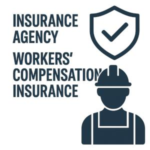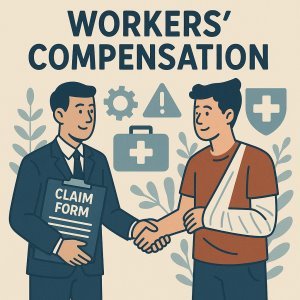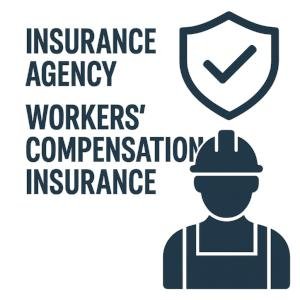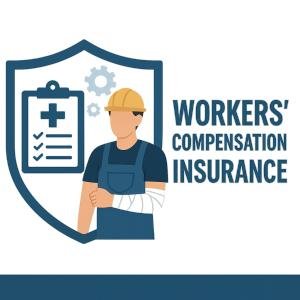
Workers’ Comp Insurance for Personnel Agencies Explained
August 4, 2025
Return-to-Duty Fitness Tests: Reducing Security Guard Workers’ Comp Severity
August 4, 2025
In today’s competitive business environment, effectively managing workers’ compensation costs is a critical priority for employers across industries. understanding the key factors that drive these expenses can empower organizations to implement strategic risk management practices, enhance workplace safety, and optimize claims handling. This article explores the top 10 questions frequently asked about workers’ compensation cost drivers, providing insights that help business leaders identify cost influences and make informed decisions to control thier workers’ comp expenditures.
Table of Contents
- Factors Influencing Workers Compensation Insurance Premiums
- Analyzing Industry-Specific Risk Elements
- Impact of Employee Classification on Cost Variability
- Strategies for Mitigating Workers Compensation Expenses
- Q&A
- Insights and Conclusions
Factors Influencing Workers Compensation Insurance Premiums
Several elements converge to determine the final cost of workers compensation insurance for a business. Among the moast significant factors are industry classification, which reflects the inherent risk associated with specific job roles, and payroll size, as premiums are often calculated based on total employee wages. The higher the risk category or the larger the payroll, the greater the likelihood of increased premiums. Additionally,a company’s claims history is closely scrutinized; businesses with frequent or severe claims are seen as higher risk,driving up insurance costs.
Other critical components include the effectiveness of a company’s safety programs and its commitment to employee training, both of which can mitigate risks and potentially lower premiums. The geographic location also plays a role, as different states have varying workers comp laws and regulations that impact costs. Below is a table summarizing key premium influencers:
| Factor | Impact on Premium |
|---|---|
| Industry Classification | High-risk jobs increase premiums |
| Payroll Size | Larger payroll equals higher premiums |
| Claims History | Frequent claims raise costs |
| Safety Programs | Effective measures can reduce premiums |
| Geographic Location | State regulations affect pricing |
Analyzing Industry-Specific Risk Elements
Understanding the unique risks associated with different industries is crucial when evaluating workers’ compensation costs. industries such as construction, manufacturing, and healthcare inherently carry higher risks due to the nature of the work performed. These risks directly influence insurance premiums because insurers assess the likelihood and severity of workplace injuries. Such as, a construction firm may face elevated costs as of the heavy machinery and potential for falls, whereas an office-based company typically encounters lower risk, resulting in reduced premiums.
Several factors contribute to industry-specific risk profiles,including:
- Work environment hazards – exposure to chemicals,machinery,or physical strain
- Employee skill and training levels – inadequate training can increase accident probabilities
- Frequency of high-risk tasks – repetitive or hazardous operations impact claims frequency
- Regulatory compliance – industries subject to strict safety regulations may mitigate risk more effectively
| Industry | Primary Risk Factor | Typical Premium Impact |
|---|---|---|
| Construction | falls,heavy equipment | High |
| Healthcare | Patient handling injuries | moderate |
| Manufacturing | Machinery accidents | High |
| Retail | Slips and trips | Low to Moderate |
Impact of Employee Classification on Cost Variability
Understanding how employee classification influences workers’ compensation is essential to managing costs effectively. Each classification reflects distinct occupational risks, which in turn directly affect the premium rates assigned to your business. As an example, employees categorized in roles with higher physical demands or exposure to hazards will typically incur increased insurance costs. Misclassifying employees can not only lead to inflated expenses but may also result in legal complications and penalties. Employers must ensure that job duties are thoroughly assessed and accurately classified to maintain cost predictability and compliance.
Cost variability tied to employee classification can be broken down into several key factors,including:
- Risk Exposure: Higher-risk roles drive up premiums due to increased likelihood of injury.
- Wage Basis: Workers’ compensation premiums are calculated based on payroll within each class, so wage discrepancies influence overall costs.
- Claims Frequency and Severity: historical data on claims per classification informs future cost assessments.
| Employee classification | Typical Risk Level | Impact on Cost |
|---|---|---|
| Manufacturing | High | Substantially Increases Premiums |
| Office & Clerical | Low | Minimal Impact |
| Construction | Very High | Substantially Raises Costs |
| Healthcare | Medium | Moderate Increase |
Strategies for Mitigating Workers Compensation Expenses
Controlling workers’ compensation expenses begins with a proactive approach to workplace safety and claims management. Employers should invest in comprehensive safety training programs that target the specific risks of their industry,ensuring every employee understands how to avoid common hazards. Another critical component is the swift and thorough reporting of all workplace injuries, no matter how minor they may seem. early intervention can significantly reduce the severity and cost of claims by facilitating faster medical care and preventing complications. Additionally, partnering with experienced claims adjusters and medical providers can help manage claim costs effectively, speeding up the return-to-work process without compromising employee health.
Employers can also benefit from implementing tailored return-to-work programs designed to accommodate injured employees with modified duties. These programs not only support workforce retention but also reduce the duration and frequency of indemnity payments. Regularly reviewing your claims data and loss history can provide valuable insights to identify patterns and areas for advancement. Consider the table below to understand how targeted strategies impact key cost drivers:
| cost Driver | mitigation Strategy | Expected Result |
|---|---|---|
| Injury Frequency | Safety Training & Hazard Audits | Reduced Incidence of Claims |
| Claim Severity | Early Reporting & Medical Management | Lower Medical and Indemnity Costs |
| Return-to-Work Delays | Modified Duty programs | Faster Recovery & reduced Wage Loss |
| Fraudulent Claims | Rigorous Claims Inquiry | Prevention of Unneeded Payouts |
Q&A
Top 10 Questions about Workers’ Comp Cost Drivers: Q&A
Q1: what are the primary factors that drive workers’ compensation insurance costs?
A1: The main cost drivers include the industry risk classification, employer’s claims history, payroll size, state regulations, and the specific nature of the work performed. High-risk industries and poor safety records typically result in higher premiums.
Q2: How does an employer’s claims history impact workers’ comp costs?
A2: A history of frequent or severe claims indicates higher risk, which insurers price into the premium. Employers with fewer or less severe claims usually receive lower rates due to perceived reduced exposure.Q3: Why does payroll size affect workers’ comp premiums?
A3: Premiums are generally calculated as a percentage of total payroll because higher payrolls imply more workers at risk. Larger payrolls increase overall exposure, leading to higher total premiums.
Q4: To what extent do industry classification codes influence workers’ comp costs?
A4: Classification codes categorize businesses based on their operations and inherent risk levels.Industries such as construction or manufacturing typically have higher rates than low-risk sectors like clerical work, reflecting the frequency and severity of potential injuries.
Q5: How do state-specific regulations affect workers’ compensation costs?
A5: regulations vary widely by state, impacting benefit levels, legal requirements, and claim processes. states with more generous benefits or litigiously complex systems tend to have higher workers’ comp costs.
Q6: Can implementing workplace safety programs reduce workers’ comp premiums?
A6: Yes. effective safety initiatives can decrease injury frequency and severity, resulting in fewer claims and improved loss ratios.Insurers often reward proactive safety management with premium credits or lower rates.
Q7: What role do medical costs and treatment trends play in workers’ comp expenses?
A7: medical costs are a significant component of claim expenses. Rising healthcare prices and prolonged treatments can escalate claim costs, directly influencing premium rates.
Q8: How crucial is accurate payroll reporting in managing workers’ comp costs?
A8: Accurate payroll reporting ensures premiums are correctly calculated. Underreporting can lead to penalties and audits, while overreporting results in unnecessary higher premiums.
Q9: Are there financial incentives available to lower workers’ compensation costs?
A9: Many states and insurers offer programs such as experience modification credits, loss control discounts, and deductible options that can reduce premiums when employers demonstrate strong risk management.
Q10: How can employers effectively manage and control their workers’ compensation costs over time?
A10: Employers should focus on maintaining safe work environments, promptly managing claims, accurately reporting payroll, understanding classification impacts, and partnering with experienced brokers or consultants to optimize their insurance program.
This Q&A provides a strategic overview of workers’ compensation cost drivers, helping business leaders make informed decisions to manage insurance expenses effectively.
Insights and Conclusions
understanding the key cost drivers behind workers’ compensation is essential for organizations aiming to manage expenses effectively while ensuring employee safety and compliance. By addressing these top 10 questions, businesses can gain clearer insights into the factors influencing their premiums and implement targeted strategies to mitigate risks. Staying informed and proactive not only helps control costs but also fosters a safer workplace environment,ultimately benefiting both employers and employees alike.
“This content was generated with the assistance of artificial intelligence. While we strive for accuracy, AI-generated content may not always reflect the most current information or professional advice. Users are encouraged to independently verify critical information and, where appropriate, consult with qualified professionals, lawyers, state statutes and regulations & NCCI rules & manuals before making decisions based on this content.







